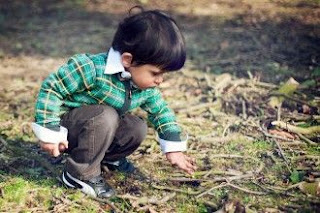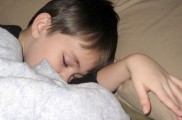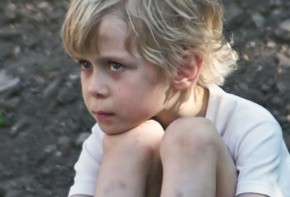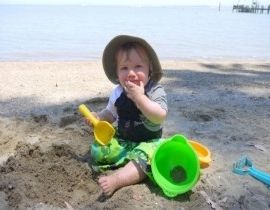Costumes make at home is a great opportunity to play and do crafts with the kids
Carnival is one of the most popular holidays. And perhaps also the most fun, because it excites children and adults a a like. At this time, each other disguise, pretending to be someone else: historical characters, superheroes, monsters, athletes, rock stars ...The list is almost endless, as wide as the imagination, and this is an essential resource to design a costume. While there are many shops to buy or rent a costume, there is nothing more entertaining, creative and tailor it funto try at home. Further more, it is cheaper and allows for collaboration of children, who will be happy to do crafts. In this report, we offer12 ideas to create practical and simple fun costumes for them. And with them.
For many people, the Carnival begins when they arrive at the party disguised character they like. For others, begins before: when choosing a character and imagine how to recreate it. What materials are needed? How to make this costume? Fantasizing options can be great fun, especially if there are children to dress up, then gives us a great opportunity to play with them to dream. Never mind that we are not a "handyman", we have a tight budget or that the result is not that ofa professional designer: with few materials can make things very nice and the kids appreciate that space of creativity.
1.The Mad Scientist :
This costume is simple because the child can dress as you like. What matters is that, over the clothes, wear arobe or white coat. If we do not (or can not get), we can also assert a white shirt that fits big (father or grandfather), in which case we double the sleeves to fit the size of your body. The costume ons are: toy glasses (or a real frame), a couple of pens to place on the front pocket and aplastic bottle with lid (sold in pharmacies to collect urine samples), that can fill with liquid color (not toxic), a rubber spider, etc. The final touchto give a little gel, because the idea is to bring the hair up and a little messy. Another option for the latter is to buy a white wig, Einstein style
2.A cat Recreating a cat is easy:
For the body, we only need a black shirt with long sleeves and tights of the same color. In the foot, the child can wear boots or shoes (the color you have, no need to go shopping) and hands, gloves to match the shoes. The ears, in a triangle, are made from black construction paper and glued to a thin tiara to hold them easily to mind. Queue structure can be made with awire(to form and maintain a certain rigidity) . What for ramos with black clothor black panty and fill it with whatever we have on hand (most cloth, paper, cotton ...) to give some consistency.Abelt, or slightly more elasticwire around the waist suffice to bond the tail to the body. The last step is to simulate the muzzle and whiskers, which can be painted in the face with apencil eyeliner.
3.SpongeBob:
This beloved character for children has a substantial advantage: it is multifaceted.Thus, the structure only requires a large cardboard box, which is available at the supermarketor at a store in the neigh borhood, as they tend to get rid of them. The box is SpongeBob's body, so the child must fit inside. The first step is to make a hole in the top and two on the sides for the small can get over there head and arms. On the merits of the case (the part that faces down), should remove it entirely, so the child can easily move and walk. Everything else is decoration. It will be necessary to line the box of yellow paper and pasted overpaper circles that mimic the spongy texture of Bob. With the same technique we can make the eyes and a pen to draw enough eyelashes. The pantaloncillo also easy to do: it lines the bottom with brown paper and draw up the pockets and belt.Ready!
4.Caught by lightning:
To make this costume must be a prior question: what would look if westruck by lightning? Almost certainly, the first image that comes to mind we will look charred, with lots of scratches. Well, materializing the concept is very simple. We take a shirt or sweater old child (if light in color, the better), we make several cuts and scratches, and add some black spots, which provide the appearance of being burned. To make these spots we can use apiece of coal, someashes, dust the graph of a pencil or a piece of acork, if prior to ennegrecer burn. The following is also stain the face and hands of small, and draw a few scratches on them (with alip liner pencil). As in the guise of science, thehair is key here. The idea is mussing, beat it a little and use some hair spray to set the "look". To complete the illusion, the best addition is an old umbrella, we can end up damaged if wring some rods and spotted fabric.
5.Make the Indian:
Many children like to "do the Indian", but we know how to turn them into one? The most practical way is to design the costumes make a poncho, which can be done with cloth, burlap, crepe paper or large plastic bag yellow (the latter only if the child is a few years and be a ware of the hazardous material, other wise it is better to use the other options to prevent accidents). Once you choose the material, we take a rect angle and fold it in half. Each half will be one side of the poncho (front and rear), so that, in the fold, it will take a cut in "V" for the small to pass by his head. The poncho surface is decorated with brightly colored lines (red, yellow, blue) following geometric shapes to facilitate the task. These lines can be made with colored tape, fabric (glued or sewn), with markers or paint most appropriate for the material used to build the poncho.The outfit is completed with abelt or a rope tied around the waist. For the head, use a fabric headband (or make arubber-eva) and add some feathers, vertically. In cheeks painted a "war lines" with lipstick and you're done!
6.Butterflies, fairies and angels:
Not that everything is equal, but we can group these characters because they share certain traits.The most important: the wings.One way is to make EVA,a very good material for how quickly we want.Otherwise, more laborious, is to use wire and cellophane. The first material to be more or less rigid, it will serve to shape the structure, the outline of the wings. The cellophane (whose transparency is ideal to mimic the fragility of a butterfly or a fairy) will use it to cover the surface of the wings, sticking to the edges we have done with wire. Duct tape is a good choice for this. If we want to recreate an angel, you must replace the paper with white feathers. We can buy a pair of feather boas, or do an imitation with many strips of white paper cut into oval. To attach the wings to the body, it's best to use a pair of elastic straps or thick,like a back pack. As for the body and accessories:
• The butterfly just need tights and a shirt of the same color-matching-wings and a tiara with a pair of antennas.
• For the fairy tights can also be used, although the ideal is to emulate an ethereal outfit. To do this, we use a basic tights and if we dare with needle and thread, make a skirt of chiffon or tulle, super imposing several layers. We just need some fabric, arubber band to hold it at the waist and glitter to give a little shine to creation. The ideal: some flowers in your hair.
• The angel dressed in white and with a piece of cloth, we can give a simple tunic to cover her body. One way to do is pick the fabric, tie two ends over one shoulder (at the best Greco-Roman) and use abelt (not too tight) to prevent the sides open. Another option is to make the gown the same way we would do a shirt with long sleeves and wide. In the head, the angel take an annulus can be done with a wire wreath lined with gold or silver, of which we use for the Christmas tree.
7.The Princess:
A white or pink dress the girl enough to start the costume. As with the fairies, we can make a long, gauzy over skirt to reach the ground. Suitable materials are chiffon and tulle, which decorate with glitter or small loops. At the waist, awide loopserve to cover the elastic joints fancy this skirt. The essential complement to the costume is acrown (there are plastic, very cheap) and some"gems" as bright bracelets and necklaces. A nice hair style and some makeup (if parents allow it, of course) make this illusion even more real.
8.The Wizard:
The classics never go out of style and this character is a good example. Can we make our children look like Merlin? Yes, and it's easy. The first is to make the costume, consisting of a dark blue tunic, long sleeves and wide, that it reaches to the feet. The best option for this is to buy an economic fabric, but can also be done with crepe paper (consider that is less resistant and, in all like lihood, will not survive the party). In any case, the blue tunic is decorated with silver stars. We can draw with a silver pen, glue and glitter them, sew them (if we have this color fabric) or glue, if we albal paper.


























